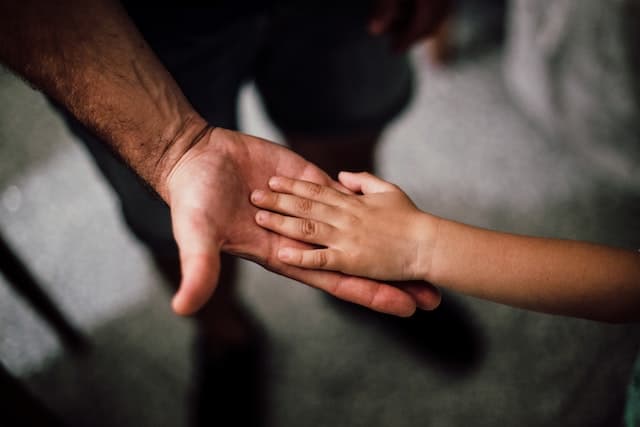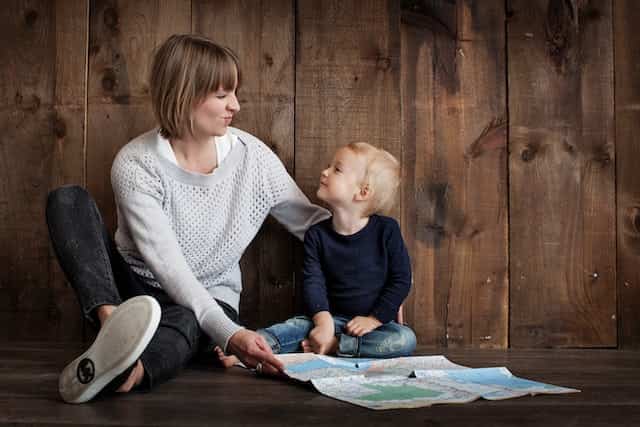
As parents, we want to keep our children safe from harm. One of the most important lessons we can teach our children is about stranger danger. In today’s world, it’s crucial that children understand the potential risks of interacting with strangers and how to stay safe in unfamiliar situations.
What is Stranger Danger?
Stranger danger is a term used to teach children about the potential dangers of interacting with strangers. This concept helps children understand that not everyone they meet is trustworthy and safe to talk to. It is important for parents to teach their children about stranger danger so that they can protect themselves from potential harm.
Children are often taught to be polite and friendly, but they need to understand that they should not talk to strangers or accept anything from them without their parent’s permission. Children should also be taught to recognize signs of danger, such as a stranger asking them to keep a secret, offering them a ride, or asking them to come closer to their vehicle or home.
Parents can teach their children about stranger danger by using age-appropriate language and scenarios. They can also role-play situations with their children to help them understand what to do in case of an emergency. It is important to teach children to trust their instincts and to seek help from a trusted adult if they feel uncomfortable or unsafe.
How to Talk to Your Child About Stranger Danger

Explain Who Strangers Are
Start by explaining to your child that a stranger is someone they do not know. It is important to teach your child that not all strangers are bad, but they should be cautious around people they do not know. Tell them that it is okay to talk to strangers in public places, like a store or a park, but they should never go anywhere with a stranger or get into a car with them.
Teach Your Child to Recognize Suspicious Behavior
Teach your child to be aware of their surroundings and to pay attention to people’s behavior. Explain to them that if someone is acting in a way that makes them feel uncomfortable, they should tell a trusted adult right away. Teach them to look out for people who are following them or trying to get them to go somewhere with them.
Role-play Scenarios
Practice different scenarios with your child to help them understand how to react in different situations. For example, you can pretend to be a stranger and ask your child to come with you. Teach them to say no and to run away, and to find a trusted adult to help them. You can also practice what to do if they get lost in a public place.
Teach Your Child to Say No and to Run Away

Teach your child that it is okay to say no to an adult if they feel uncomfortable or if someone is trying to get them to do something they do not want to do. Explain to them that they should run away and find a trusted adult to help them if they feel unsafe. Practice this with your child so they feel confident in their ability to react in a dangerous situation.
Discuss Safe Places and People
Teach your child about safe places and people they can go to if they need help. Tell them to look for police officers or security guards if they are lost or feel unsafe. Teach them to go to a trusted adult, like a teacher or a parent, if they need help or if they feel scared. Make sure your child knows their address and phone number, and teach them how to call 911 in case of an emergency.
Tips for Reinforcing Stranger Danger Lessons
Teaching your child about stranger danger is an important step in keeping them safe. However, it’s not enough to just teach them once and assume they’ll remember everything. Here are some tips for reinforcing the lessons:
- Role-play scenarios with your child. This will help them practice what to do in different situations, such as if a stranger offers them a ride or tries to lure them with candy.
- Use real-life examples in your discussions. Talk about news stories or incidents in your community to help your child understand the potential dangers.
- Encourage your child to trust their instincts. If something doesn’t feel right, teach them to say “no” and to tell a trusted adult.
It’s also important to teach your child about “tricky people” – individuals who may not necessarily be strangers, but who could still pose a danger. These could include someone who tries to convince your child to keep a secret from you or someone who asks for help finding a lost pet.
Remember to keep the conversations age-appropriate and to avoid scaring your child. By reinforcing the lessons and practicing different scenarios, you can help your child stay safe and confident in their ability to handle potential danger.
Why Teach Your Child About Stranger Danger?
As a parent, your child’s safety is your top priority. One of the most important things you can do is teach your child about stranger danger. This means educating them about the potential dangers of talking to strangers and how to protect themselves in different situations.
There are several reasons why it’s important to teach your child about stranger danger:
- Prevention of abduction: Children who are aware of stranger danger are less likely to be abducted by strangers. They know how to recognize and avoid dangerous situations, and what to do if they find themselves in one.
- Empowerment: Teaching your child about stranger danger empowers them to take control of their own safety. They learn to trust their instincts and make smart decisions when it comes to interacting with strangers.
- Increased awareness: When children are aware of stranger danger, they are more likely to recognize potentially dangerous situations and avoid them. This can help keep them safe in a variety of settings, from the playground to the grocery store.
Conclusion
Teaching your child about stranger danger is an essential aspect of keeping them safe. It is important to start early and continue reinforcing these lessons throughout their childhood.
By discussing the dangers of strangers with your child in a calm and age-appropriate manner, you can help them understand the importance of staying safe and avoiding potentially dangerous situations.
Remember to teach your child to trust their instincts and to always seek help from a trusted adult if they feel uncomfortable or threatened. Additionally, it is important to practice scenarios with your child so they know how to react in a real-life situation.
Overall, teaching your child about stranger danger is an ongoing process that requires patience, consistency, and open communication. By taking the time to educate your child about these important safety measures, you can help them stay safe and secure as they navigate the world around them.
Leave a Reply